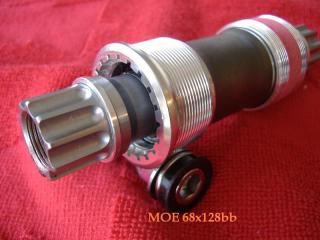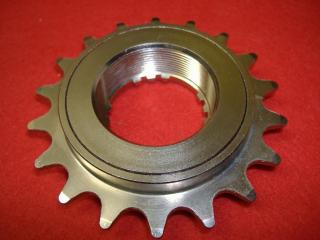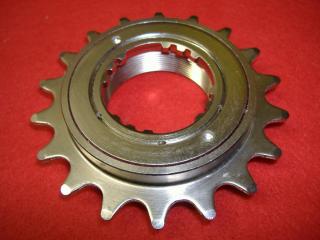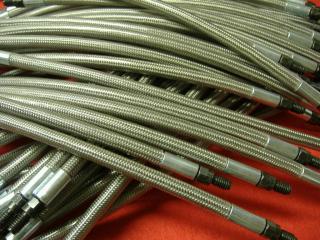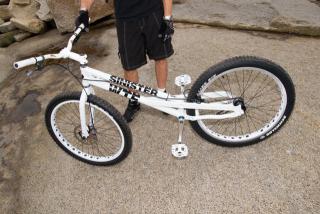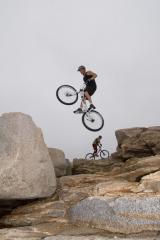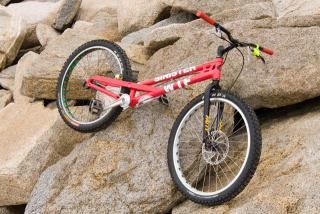
Tim/Trialsin USA
Members-
Posts
175 -
Joined
-
Last visited
Content Type
Profiles
Forums
Gallery
Everything posted by Tim/Trialsin USA
-
Hats off, your a good hatchet guy. Might I suggest that we recall FSA, MONTY and and few other brands for this alleged mass ruining of cranks because the ring does not extend over rounded end of spline. Oh yeah....forgot.... its because it is a non issue.
-
For those that have had the ring be an issue, cool. There are only X number of options of spindles from the manufacturer. I am going to give the benefit of the doubt and assume we all checked the box that was for selecting the hardest/best spindle material. Now we are down to size (easy on the jokes....ha, ha, ha). If you are going to run a BB that is under 300g and you are a basher/street rider.... I might suggest a larger size spindle. For those actually riding trials with any degree of deftness, the success of the BBs from First (which pretty much covers Meta, MOE, Trialtech and certain ones from Echo) has been very good.
-
FIRST BB *cough* Meta *cough* Trialstech *cough*. I suggest you not try any of those lest you be sorely dissapointed.
-
Probably done for effect. Even if not. Blocks that would get melted down and recycled are better than curls that would get melted down and recycled how? It is the same amount of material, just in different form. I guess I am missing the source of your consternation.
-
-
Rim weight (within reason) has little to do with wheel strength. The quality of the build is far more important.
-
Cannondale does still make the Fatty fork. It is just not called that. It is equipped on the Tandems. Not available separately, maybe you can ask a dealer to try and buy a replacement/warranty one.
-
Does Using A Brake Booster Improve Your Brake?
Tim/Trialsin USA replied to Ross McArthur's topic in Trials Chat
I third Grant-Hundly and Adam. There is measurably more power being delivered to the rim with a booster, assuming equal amount of pressure applied to a non boostered lever and one with. There are other issues that change when putting on a booster. Flex and torque (as distinct from simple bowing out that gets reduced by bolting on a booster) of the seat stay most notably. These changes are going to fall into the "feel" category, and the benefits/down side of these changes is purely subjective. The amount of flex in the booster is another issue. Thickness does not automatically produce a stiffer booster, conversely, nor a thinner one automatically produce a more flexible one. -
No, I am thinking of introducing special ground soles of street sneekers that you rub tar onto....... think how much weight you could save if you just chucked the brakes all together.............. wha, ha, ha, ha.......
-
Good to hear they got there OK, and not abducted by the malicious Icelandic biketrial swallow en route. First production run is long gone...... not to worry, next batch is due to arrive in my hands in a week. Sourcing things locally is always a bonus in time savings and quality control.
-
A familiar freewheel in yet another name tag. 60 engagement points per revolution if anyone needed another hint. More infor as it becomes available.
-
A front thread on cog..... you should have no problem running 118. If it is front freewheel........ some set ups can use 123s (like Monty), but to be safe 128.
-
Pretty self explanitory. For the most part everyone here in North America uses 170s. Have been told most of UK/Europe has gone 175.........
-
-
-
Just an update RE Plazmatic Steel braided crossovers. As promised, production was done last week of July (will wonders never cease!). They are on UPS truck on the way to me now and should arrive beginning of next week. From there, a box will be flying over the Atlantic.
-
Absolutely. Real evidence is lacking. U6 is great stuff, but flexes allot more. Conversely 7075 is stiffer/lighter but has much different reaction to harsh treatment (catastrophic failure versus bending). At the end of the day, a rider must select what is going to best serve them. It is all in the eye of the beholder.
-
The only thing that makes almost all forks currently on the market "trials specific" is cosmetic. Having said that, there are a couple things that spell early death for any forks. Hook/splatter/japzap up moves landing flat It only takes a couple really goofed times with those moves that will seriously compromise any fork........any material. The sort of stresses these moves inflict upon a fork........well, they were not designed for it. Therefore, it is a bit difficult to determine which fork is "the best" as reason for failure is rarely determined with any accuracy.
-
In the read of the statement, if my error, I am certainly man enough to admit it. It is just when you have an equals sign, and one one side is not good for anything but street and on the other side of it is all pads that are with smooth rims........ there did not seem to me allot of misinterpretation to be had, apparently I was incorrect! Syntax and my reading of it were cohorts of the worst sort.
-
It is all good. The Equation of pads (Plazs being lumped with others, that part understood) used on smooth (with or without a little tar) to that of being not really any good for much beside street riding struck me as odd. Must have just been the wording. I felt it needed some sort of response. There is so much myth/hype/hysteria about trials brake pads that I do try and interject on occasion. Defense of Plazmatic CRM?............ yes, of course;) "would you talk like that to your customers" Explain a misconception, vigorously defend a brand, and maybe throw in a sarcastic quip.............. good lord, yes! Lest we all become dullards.
-
Yes, it is the vast right wing Plazmatic conspiracy looming dark on the horizon..............be wary.....
-
That statement contained in post #10 is a bout as ill informing and off the mark as one could get. I am surprised Adam. But thanks for the jab so I can set the record straight. The LARGEST DIFFERENCE between pad compounds is in the circumstance of a smooth (reletively clean) rim. Why/how is this? Because the LEAST AMMOUNT OF OUTSIDE INFLUENCE (i.e. grind) is clouding the ability of the compound to interact (i.e. grip) with the rim. Plazmatic CRM pads without a doubt are the grippiest pad on a smooth rim. It is what they were designed for (as opposed to color choice from the Barradine catalogue). Because I say so? Of course not, I do not have that kind of ego. But at this point I will have to beg off on revealing the proprietary testing/data, as it is what keeps Plazmatic CRMs well ahead. Tar can ad to grip (though definatly NOT in wet situations!), but it does not change the difference in performance from from one pad to another. Heavy Grind situations have the LEAST VARIANCE in braking power between pads. Why/how is this? Pretty obvious, the TEXTURE is what is causing a good bit of the braking power. The compound in this situation is less important. Brakes are a technology driven performance item (unlike, say grips which are tactile). In the end the clip type and ammount of text alotted to a description on an order page do not slow/stop a bike.
-
It is obviously the lack of magnetic permeability and the fact it can handle 400C on those really warm summer days..........
-
Sorry, did not mean to come off as a putz. I guess I just did not want to go into a long boring schpeel about materials. Generally speaking....Ti is stronger, but will snap before it bends. There are always trade offs. I agree, there are many different things labeled titanium or steel. Aluminum is another one that is hard to nail down...... as 7075 from one source might be great, but from somewhere else crap.
-
Prototype Hope Mod Screw On Rear Hub
Tim/Trialsin USA replied to Ashley Smith's topic in Trials Chat
Mod market has almost totally gone disc.....at least in the high end, and that is where HOPE products do well. Scew on hub might do OK, though I have my doubts. Don't think there would be any more people screaming for one than there are people screaming for a thread on King hub.

